EPISODE 8: Improving the Patient Perspective through an Equity Lens
“…I believe that the movement away from fee-for-service towards value-based care is essential in achieving equity. I do believe though, that it will only work if we’re being explicit about addressing equity and… transparent about the roots of… inequities.”
— Sinsi Hernández-Cancio, Vice President of Health Justice at the National Partnership for Women & Families
Host Aparna Higgins, LAN Senior Advisor and Senior Policy Fellow at the Duke-Margolis Center for Health Policy, interviews Vice President of Health Justice at the National Partnership for Women & Families, Sinsi Hernández-Cancio. In this episode, Sinsi discusses her perspective on patient-centered care and the crucial changes needed to transform health equity. She also shares her personal and professional experiences with the health care system, emphasizing the inequities that need to be addressed to provide effective, value-based care.
Episode Q & A
Share a little bit about your background and also what brought you to this kind of work.
I’ve been working in the space of health policy for about 20 years now. I’m a lawyer by training, but what really drives my commitment to this work comes straight from the fact that in addition to being a policy person, I’m a mom. I’m a person with many chronic conditions myself, with a kid with many chronic conditions himself. And I’m also a Puerto Rican woman who has a lot of experience with when communities are dealing with inequities, what we can try to do to overcome them. So, I bring all of those experiences with me, both the lived experience and then the actual policy analysis, more professional experience to trying to make sure that our health care system as we move towards the future can effectively care for, with dignity and respect and excellence, every single person in this country.
So, I wanted to focus initially on health equity and value-based care from a patient perspective, and maybe start by asking you what you would like people to know that would help them to better advocate for their own care.
That’s an excellent question, and I think that the first thing is to answer to frame this as not only what individuals can be doing, you know, to make sure that they’re getting the best possible health care and advocating [for] themselves in different health care settings, but that it’s also a family, right? For a lot of us, whether it’s because you’re accompanying a spouse or child or a parent or some elderly relative, health care is not just about the individual. It’s about how the family can be, is engaged in supporting the health of that particular individual. My dad was a family physician. So, I learned about family focused based medicine, from him. And if we’re not, we have to make sure that as we’re designing systems and improving systems, that we are taking into consideration the fact that it’s not just a one-on-one thing.
And in fact, patients do better when they have someone else with them in appointments to help them ask the right questions, advocate for them, remind them if they forgot something, take notes if they need to. So that’s the first thing. It’s like, make sure that as a patient you are very clear about who’s like on your team, on your team in terms of family or friends who can be there to support you. Because most of the time when we go to get our health care, it’s because there’s something wrong and there can be anxiety and worry associated with that. And none of us are at our best when we’re worried and anxious. So being prepared with a buddy to help you think things through and remember things is really important. That’ll allow you to, in advance, really like, think of what are the questions you want to ask and make sure that you’re asking questions.
In many cultures, the doctor is somebody who people were trained to defer to and not question and not ask and not really converse with. And that is not the best way to get the best care that you can get. Right? So, making sure that you ask questions like, okay, so what are my options? And what happens if we do nothing? What does this word or this phrase mean? And then verifying, right? Like sometimes sadly, because of the way health care is paid for, doctors have to see a lot of people in little time. So, you want to make sure that they’re not getting things confused, right? Like making sure that did you, if they’re prescribing something like, well, how does that affect, how might that affect these other three medications I’m on?
Cause they may have not had time to check that, or how did that affect this other condition that I have? Because they might be a specialist for your leg and not be thinking about what’s happening in your lungs, right? And so, it’s really on the patient, unfortunately. I mean, wish it could be a little bit different, but it really is very much on the patient to make sure that they’re asking all the questions to make sure that everything is clear on what your next steps are and what the directions are. And if you’re not clear, ask and keep asking. And sometimes they may try to rush you, but you just say like, I’m sorry doctor, but I really want to make sure I understand this. So those are the kind of things that are really, really important to be in a position to ask your providers about.
What you've described is how one can advocate for oneself along with having a team or a buddy and really asking the questions that would lead to whole person care for yourself. What are your thoughts about how one could or should advocate for their community's care?
That’s an excellent question and one that’s a bit more complicated because it really depends, communities in this country are very differently situated. And at the end of the day, in the context of value-based care, people don’t know what value-based care is. And if they do in a lot of places, it’s just understood as a way of denying people care, right? Like, making sure that people aren’t getting expensive care. Or sometimes it can look like shaming people because they don’t have the right options as others, right? Like, why do you keep coming to the ER? Why don’t you go to your primary care physician? It’s like, well, maybe because I don’t have a primary care physician because there isn’t one that’s taking new patients where I live, right?
So, those are what particular challenges that different communities face can vary greatly, right? It can be different if, depending on if what racial and ethnic background your community is predominantly from, it can be different if you’re in a rural area versus in a suburb versus in an urban area. So, at the end of the day, what is valuable to different people and different communities can vary very, very dramatically. So, what it’s about you understanding what is happening in your community, what are some of the challenges that people in your community may be, dealing with and then working together to figure out how you can raise that issue with whoever is the right target to listen to that issue. Right? Is it the community health center that’s in your area that people go to? Is it that you actually need to talk, find a way to connect with people who are advocating in their Medicaid program? Is it that you need to connect with maybe your local AARP chapter that is helping seniors navigate health insurance? Like it really depends. And so, the first step really is to understand better what your community and your neighbors are going through.
So, sort of switching gears just a little bit you talked earlier about how providers may not always have the time to spend with a patient. For example, they might feel rushed. Based on your experience, what are some examples of providers who get health equity right, in your view?
So, I think we need to step back a minute and just talk about what we mean by health equity, right? And health equity is an idea that every single person has the ability to be as healthy as possible, right? Without barriers and especially without structural barriers that are impeding them from being healthy. Now, a chunk of that has to do with the kind of health care they can get, and a lot has to do with things that aren’t about health care, but have everything to do with health like the conditions in their neighborhoods and things like their experiences with racist inequities and structural inequities and income and education and language and a whole bunch of things, right? So, it’s important to understand that the actual clinical care you get is a very important part, but a relatively smaller part compared to everything else that I just mentioned.
So, for that reason, I think that a really excellent example of providing high quality care that centers equity and centers a patient are community health centers and other community-based providers because community health centers many of which are federally qualified, but not necessarily all of them were designed and created specifically to attend to the health of what often were underserved communities. And they have a lot of experience with, for example, providing care in different languages or providing care in rural areas or providing care that is culturally centered that includes, for example, community health workers that can help with the non-clinical sides of care, right? And so that is why it’s really important to look to where there are a lot of good stories, success stories and see how that can be adapted or incorporated into the rest of health care.
And especially, how does payment need to change so that the things that we know work can actually get paid for? How does payment need to change, for example, so that doctors can spend more than 10 minutes for their patient if they have more questions, right? Or how do we maybe pay for team-based care so that the doctor can deal with like purely clinical things, but then there is, there are other members of the care team, like a nurse or community health worker or someone else who can be assisting with some of the other needs that the patient has in order to be able to be successful with their health. And so, I do feel that models are out there, but what we haven’t figured out is how to effectively incent and pay for the care that we know is going to make a difference.
So, can I maybe have you elaborate a little bit? I know you talked a little bit about paying differently, making sure that providers can spend sufficient time with the patients who are coming into the exam room and through the door of their practice. In your, sort of, based on your experience, what role can APMs and value-based care play in advancing health equity?
I believe that the movement away from fee-for-service towards value-based care is essential in achieving equity. I do believe though, that it will only work if we’re being explicit about addressing equity and very, very transparent about the roots of the inequities to reduce the racial and ethnic and other inequities in mind, right? Because trickle down payment reform is not going to work. Unfortunately, that has not been the case so far. We don’t expect it to be the case in the future. And so, because part of the big challenge in the United States is that there have been literally, you know, generations and generations of exclusionary decision making that have created structures of inequity including in our health care system. And so it doesn’t matter what kind of fancy new payment system you come up with, as long as it’s like a PMPM, you know, any kind of, you know, global payments, however you want to create it if it’s only looking at like, from this day forward, we’re going do this, there are going be providers and communities that are always going be disadvantaged because you’re building it on such an uneven playing field. And the actual barrier to entry for a lot of providers, like, especially, you know, rural providers and you know, truly community-based providers, and you know, that one or two you know, doctor shop that has always been in that community that, you know, is from their same background, that knows their language and knows their children, you know, all of that. They can’t make it in a value-based world without having some deep investments in some infrastructure that is needed and in real collaboration. So yes, we need to get away from fee-for-service, but the models that are coming out of CMMI right now are not enough.
They’re just not, it’s not going be enough. And that’s why lots of folks have been thinking about, in addition to alternative payment models for ongoing care, what needs to happen to level up care in some communities that have been consistently underfunded. Because the other thing that often happens, especially in the safety net, is because of the challenge of being in under-resourced communities and of being in having majority Medicaid patients, for example, they have a lot less resources to work with. And then, what a coincidence that they start, they look like they do worse on quality measures and then they get less money. And so, is that really the way to make sure that there is effective high-quality care in every community by penalizing those that are already in those communities? Because making a hospital go out of business because they look like they had low value care when really what we were seeing was a reflection of other ongoing challenges in the community, if that hospital is in this community, that community isn’t doing any better. That community is not going be doing any better if an ER is 20 minutes away instead of five minutes away, especially if you have a heart attack or some other like, urgent condition.
So, we need to think of better ways that will work, especially for those who have the biggest challenges of having underutilization of the right kind of care as opposed to what a lot of people think about when they’re thinking about value-based payments, which is curbing overutilization.
I was wondering if you can share any specific frontline examples of equity in action?
Well, I think that those are some of the best examples. And, I want to clarify, I’m not saying that we need to switch entirely our health system to have only community health centers. That’s not what I’m saying. I’m saying that there’s a lot of lessons to be learned about governance, about programming, about outreach, about representation that can be learned from those clinics. But I’ll give you a couple of examples that do come from community-based care. So, for example there were some interesting projects that were being done out in New Mexico, in very rural New Mexico, in an organization called Hidalgo Medical Center, which was a community health center where they realized that they had this 5% of the highest utilizers of the really, really expensive patients.
And one of the understandings they had is like, if you have somebody who’s at that top 5%, so many things have gone wrong with them already, right? Not just their health care. And so, what could we do if we got some extra money to have community health workers really from the community, right, get extra resources to help them work out whatever it is that they need, right? And they’re able to get this pilot done with a local managed care organization that they were contracting with. And what they found was like if you, and in this structure, the community health workers were their own department independent from independent, but equity, at the same level as physical health, mental health, and what was the other one? And behavioral health. And then there was like family services and support, right?
And they were equally important. They each had their own, their independent funding source because they were getting this additional per member per month just for those high utilizers. And the outcome was like, for every dollar that they spent, they saved four. Right? It’s incredible, that’s one example of how building on community assets, being those experts in the community who know how to navigate, who are trusted, already made a huge difference, not just in their health, but in the bottom line. Another example is from right here in DC which is the area that I’m in, which is again, a managed care organization in DC trying to figure out how to address a terrible maternal health crisis among Black and other women of color in DC decided to, I’m going to contract with a Black woman run/led organization that has doulas and other kinds of community health worker and community education and contracted with them for their patients to say like, they’re not even, they don’t do any clinical care, but they do all of what needs to go around it.
And it really made a difference. It made such a difference in the outcomes that the insurance company decided to expand the program, right? And so, what those have in common is that rather than looking at a community that’s struggling and saying like, what is wrong with this community, they were looking at a community that was struggling and saying, well, what are the existing assets in those communities? And at the end of the day, the assets were its people, it’s the people that were trusted, that were understood, that had cultural congruence, that had language congruence. And so, to the extent that we can make it so that there is more real partnership and investment in community assets in a coordinated way, the better our outcomes are going to be.
Earlier on you talked about your background and your lived experience. So, I wanted to ask you about how you experience health care personally.
So, it’s really interesting, and I think that’s always an important question because I think all of us to some degree have some story of how the health system let us down at some point or let down a family member. And I think the fact that I’m a woman of color makes that even more likely. And the truth is that I have an advanced degree. I have always had, well, not always, but for the last 20 years, I’ve had excellent insurance. You know, my dad was a doctor, I understand the language. English is my I’m fluent in English, have a good job, all those things. And when it comes down to it, I still have been treated really neglectfully by the health care system in multiple different ways. I mean, I think in a previous LAN event, I talked a bit about my birth story about, my son’s birth story and how I almost died giving birth.
You know, even before the actual birth I had an OB practice fire me. They fired me four months pregnant because I was asking for too much. And what I was asking for was, instead of keeping going, I kept going to the ER because I had these migraines that wouldn’t go away. And I said, “Can you please talk to my neurologist and figure out what medication is safe for me to take?” And, they kept saying, “Well, your neurologist has to decide.” And I would say, “Yes, but my neurologist doesn’t know necessarily what’s safe for a pregnant woman. You need to talk about that.” And eventually, immediately after, like the third time that I was out of the ER with the ER people saying, “You can’t keep coming here,” it’s like, I have no choice because no one else is helping me.
And they sent me an email saying that they were no longer going to take care of me because the level of care that I was asking for was too complex for what they were willing to give. And all I wanted was for them to call my doctor. Right? Sadly, that is not untypical. And that is here in DC where there are many, many OB’s many OB practices. Right. Imagine if you’re in a rural area where there isn’t any other, and that’s what you’re stuck with, right? Right. Other things that just go wrong because our system is just not designed in a way to really center the experience of patients. I remember at one point, I have really bad asthma. And it’s a known thing now because research has improved that albuterol doesn’t work very well with Puerto Rican and Black patients.
Not Latinos in general, but Puerto Rican and Black patients. None of my doctors ever knew this data, you know, not even my pulmonary specialist or my kids’ pulmonary specialist. I’m the one that has to tell them, by the way, in such-and-such JAMA [Journal of the American Medical Association] article, there was like, it shouldn’t be that way. Right? Because there are not very many people that can talk that way to their doctors. Right. And it doesn’t even get to the point of like, what is the alternate solution? I don’t know. But what ends up happening is that we end up in the ER and in hospitals when maybe we shouldn’t have to and end up having serious, serious side effects from using more and more steroids and more and more higher risk medications because initially, things were not addressed the way they should have.
And not only that, I remember being in the hospital with IV prednisone and asking for snacks and being given graham crackers and Oreo cookies for snacks at night, three days later, I’m told by nutrition, why aren’t you ordering the diabetic meals? I was like, [because] I’m not a diabetic, but guess what? My sugar was at 400 and nobody had bothered to tell me. And here I am eating Oreo cookies and graham crackers. Right? So those kinds of problems with the fractured care, the lack of coordination, the not checking in with patients, not letting them know what’s going on, that is the current status of most health care in this country, unfortunately. And so hopefully value-based care can help change that, but only if we design it to do it in a way that actually achieves this. And not just trying to get a one size fits all payment for everybody.
Are there other things that are needed to bring more APMs and person-centered care to vulnerable communities?
Well, I think they’re two different things. Like the more person-centered care is something that is as much culture as it is payment. Right? And workflow and how institutions are coordinating care and what kind of staff they have, and do they actually are they screening for social determinants? Do they have partners in the community to address those social determinants? I mean, there’s things that can be done outside of, or independently of the payment systems they’re in because it has a lot more to do with in many ways with culture and with just how they do hiring. Right? Right. However, when it comes to the payment side, when it comes to what is needed for, to create more equity, it’s really important that it, that we’re sure that it’s not just a question of throwing money at the problem because let me be very clear in a lot of these communities, you’re going to be spending a lot of money in the beginning to get things up to where they need to be before we really, I mean, we need to stop measuring re return investment for health care in dollars, right? The return on investment needs to be on, like, are people healthier? That’s how you measure. Are people missing less work? Are people missing less school? Like a social return investment is going to be really, really important or else we’re never going to get ourselves out of this kind of like catch 22 of like, well, we want to improve outcomes, we can only do it by saving money. And that is not a six-month turnaround in most cases, that is not even something that can be measured in the same balance sheet, right?
Like, it might be that we need to spend more earlier with middle-aged people in primary care so that Medicare can save money 10 years later. Like, there’s, there’s a lot of issues with how we are counting progress and counting success. So it’s, but at the same time, there’s things that are really clear that are going to be needed outside of health care for it to be successful. Like as long as there’s a digital divide, which is a real thing, digital red line is a real thing. Right now about, I believe it’s about 60% of rural hospitals don’t have broadband. And so like, how do we even move forward on advanced payment models and data and all of that if they don’t have broadband, right? And so, there are, there is a bigger picture that needs to happen around infrastructure and the care infrastructure and the data infrastructure that’s needed. And addressing things that are really affecting people’s health outside of the four walls of a clinic, like the air they breathe and the food they eat and the water they drink.
Can you talk a little bit about how providers and community advocates can work together to advance this more patient-centered system of care?
So, on the one on one, I think we need to again, encourage a little bit of a culture change on really listening, right? On listening, on who we’re hiring, on how we’re following up on so many stories we hear about people saying, oh yeah, take this blood test, we’ll call you if there’s anything wrong. And then people never get a call, but there’s something wrong. They find out much later a lot, there needs to be a lot more attention paid on what is happening at the front desk and what is happening like in the in terms of callbacks and nurses and so forth, right? And so, I think that there’s a lot of collaboration that can happen in terms of there’s so many of these small, super underfunded community organizations that people are used to going to, that people trust.
We saw this a lot in addressing the pandemic and vaccination, right? That the more we were able to get community organizations that already had the trust and understanding and the language of the community, the more effective they would be. I think advocates community, advocates and providers can be working together more to figure out how to not just tell a community, well, you got to do X, Y, or Z, but telling community, well, we really would love to partner with you to do X, Y, or Z, and here’s some money to do it, because they don’t have the money, right? And so that is really, I think that’s really important on a kind of a, on a like one off. I mean, it shouldn’t be a one off. It should be developing relationships, not a transactional thing.
But then we also have to think about stepping back a little bit more systematically. How do we create more opportunities to hear from the community, to know the community, to get out in the community, right? Like going to the street festivals and can you, can they invest in, come together and get a grant to get like a mobile health unit that can go up? Like those are the kind of projects that are more than just a one off where you’re actually building more infrastructure and capacity and more than anything, building understanding and trust. And that at the end of the day, is what it’s all about, is being able to develop and maintain trust between health care institutions who honestly do not have the best record of being trustworthy in some communities, and then getting to a place of real trust and collaboration.
I know we've talked a lot about what's wrong with the health care system, and then you've also shared ways in which it could be improved and particular examples in areas of the country where they've had success. So, looking forward to the future, what would you like to see the patient provider look like in one to three years?
So, what I would say is that I’d like to get us to, I mean, again, this question can be answered whether like on the one on one and then more systematically, right? Yeah. On the one on one, I think that there’s a lot of good work being done with things like implicit bias training and a lot that has been done around things like patient centered care and trauma informed care, and making sure that doctors understand more about the context of a patient when they’re trying, when they’re developing care plans, right? And that all of that can be a little less one way and more collaborative and more understanding of the patient’s context, right? So, like, I remember my dad telling me when I would ask him as a little girl, what’s the difference between family medicine and being just a regular general doctor?
And he said, well, I’m thinking about how family’s going to be affected. So if a mom is sick, and I say, well, you’re just going to have to be in bed for two weeks, I know that that is a ridiculous thing to tell a mom without actually talking to her about what is a plan who can help you, well, maybe we actually need to put you in the hospital because that’s the only way you’re going to get off your feet, having those levels of conversation. Yeah. And then I think the other thing is how can we get to a place more systematically where, for example, a community health worker is available to anyone who needs it, right? Because we’re paying for team-based care and there’s always a community person on the team. Like, I can tell you that with all of my background and good insurance and all of that, with a lot of my son’s health issues because he was a high utilizer, the insurance company gave us a nurse to help us figure out things like, where the hell do they have this particular medication that we can’t find anywhere?
Right? And I was a professional person with a lot of resources, and it was so helpful also to my stress and anxiety that to know that somebody was helping me find this medication that they couldn’t find anywhere, right? Yeah. Like, who, where is there, a therapist, a child therapist that I can find in my plan anywhere in the within 20 miles. Like, those are the kind of things that if it became like just a common thing that people could get help, as long as we’re going to have as fragmented and complex health care system as we have, we’re going to need people to help them navigate it. Because what ends up happening is like, people will just give up and either they got a heart attack from the stress, they gave up and aren’t doing what they’re supposed to be doing for their health and end up in the ER over and over again, they don’t do well, right? We lose them. And so those are all things that our health system can do a lot better. And it’s like making it more user friendly and I don’t, seamless I think is a lot to ask, but at least less, less complicated and convoluted so that people who really do want to get the care they need when they want it, and when they need it, can actually do it without losing their job because they had to miss work. They’re all of these different ways that we’re making, being healthy so, so complicated for people that we can fix.


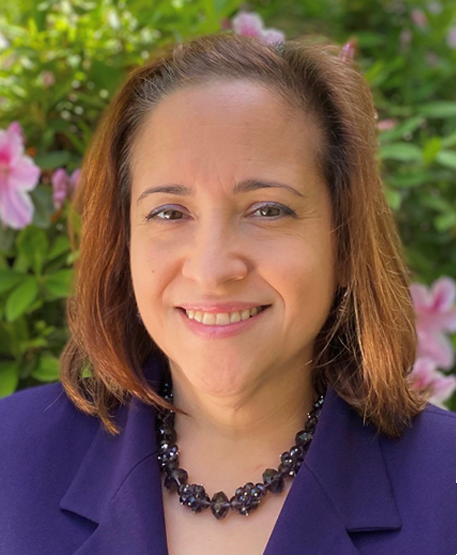
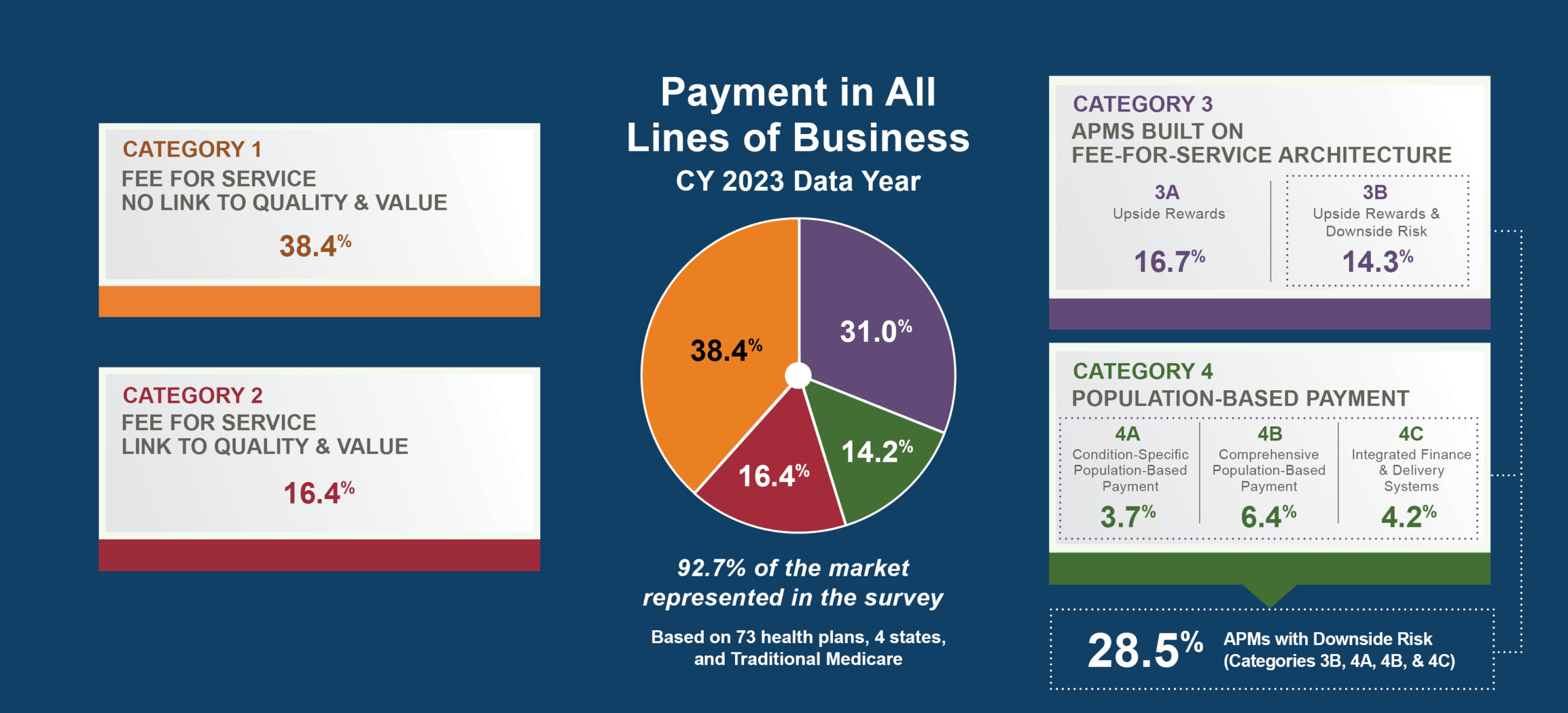
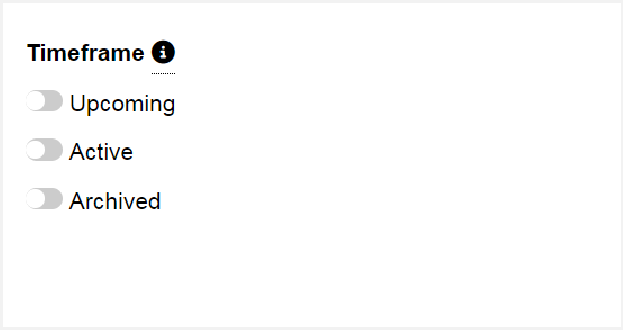
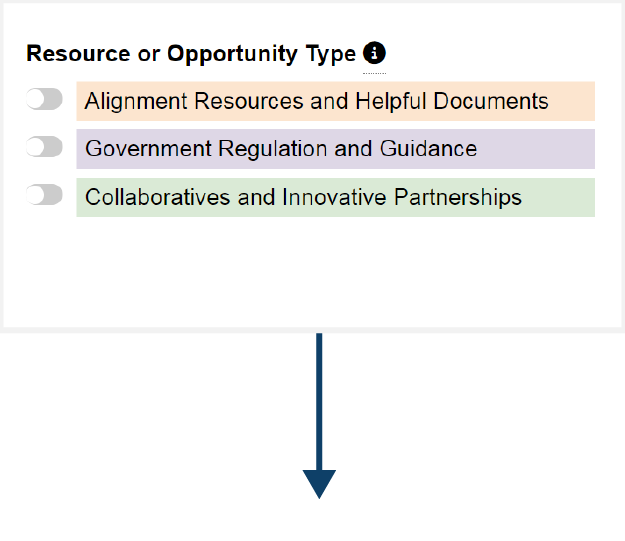
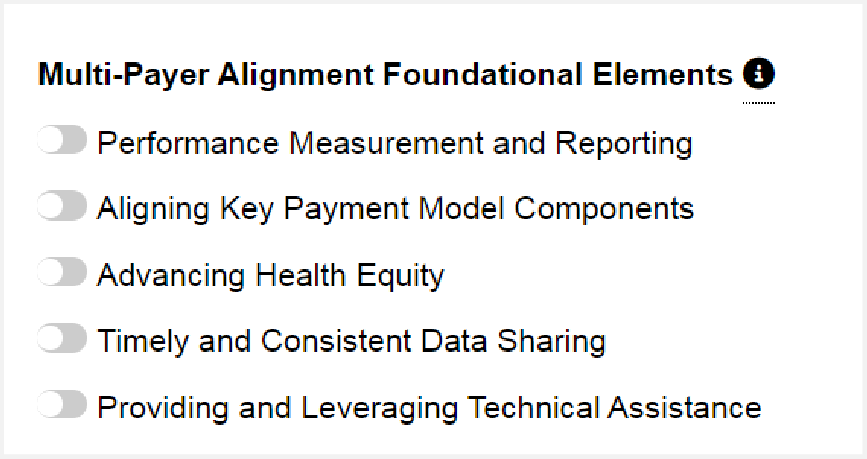




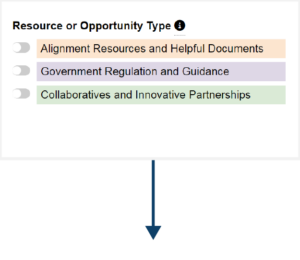

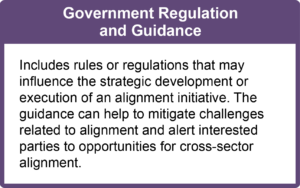
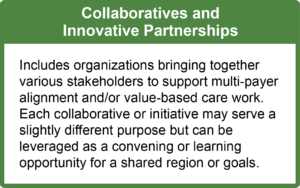
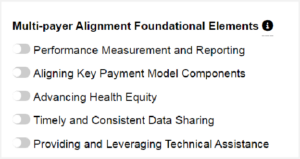




 Emily DuHamel Brower, M.B.A., is senior vice president of clinical integration and physician services for Trinity Health. Emphasizing clinical integration and payment model transformation, Ms. Brower provides strategic direction related to the evolving accountable healthcare environment with strong results. Her team is currently accountable for $10.4B of medical expense for 1.6M lives in Medicare Accountable Care Organizations (ACOs), Medicare Advantage, and Medicaid and Commercial Alternative Payment Models.
Emily DuHamel Brower, M.B.A., is senior vice president of clinical integration and physician services for Trinity Health. Emphasizing clinical integration and payment model transformation, Ms. Brower provides strategic direction related to the evolving accountable healthcare environment with strong results. Her team is currently accountable for $10.4B of medical expense for 1.6M lives in Medicare Accountable Care Organizations (ACOs), Medicare Advantage, and Medicaid and Commercial Alternative Payment Models. Mr. James Sinkoff is the Deputy Executive Officer and Chief Financial Officer for Sun River Health (formerly known as Hudson River HealthCare), and the Chief Executive Officer of Solutions 4 Community Health (S4CH); an MSO serving FQHCs and private physician practices.
Mr. James Sinkoff is the Deputy Executive Officer and Chief Financial Officer for Sun River Health (formerly known as Hudson River HealthCare), and the Chief Executive Officer of Solutions 4 Community Health (S4CH); an MSO serving FQHCs and private physician practices. Victor is the Chief Medical Officer for TennCare, Tennessee’s Medicaid Agency. At TennCare, Victor leads the medical office to ensure quality and effective delivery of medical, pharmacy, and dental services to its members. He also leads TennCare’s opioid epidemic strategy, social determinants of health, and practice transformation initiatives across the agency. Prior to joining TennCare, Victor worked at Evolent Health supporting value-based population health care delivery. In 2013, Victor served as a White House Fellow to the Secretary of Health and Human Services. Victor completed his Internal Medicine Residency at Emory University still practices clinically as an internist in the Veteran’s Affairs Health System.
Victor is the Chief Medical Officer for TennCare, Tennessee’s Medicaid Agency. At TennCare, Victor leads the medical office to ensure quality and effective delivery of medical, pharmacy, and dental services to its members. He also leads TennCare’s opioid epidemic strategy, social determinants of health, and practice transformation initiatives across the agency. Prior to joining TennCare, Victor worked at Evolent Health supporting value-based population health care delivery. In 2013, Victor served as a White House Fellow to the Secretary of Health and Human Services. Victor completed his Internal Medicine Residency at Emory University still practices clinically as an internist in the Veteran’s Affairs Health System. Dr. Brandon G. Wilson, DrPH, MHA (he, him, his) joined Community Catalyst as the Director of the Center for Consumer Engagement in Health Innovation, where he leads the Center in bringing the community’s experience to the forefront of health systems transformation and health reform efforts, in order to deliver better care, better value and better health for every community, particularly vulnerable and historically underserved populations. The Center works directly with community advocates around the country to increase the skills and power they have to establish an effective voice at all levels of the health care system. The Center collaborates with innovative health plans, hospitals and providers to incorporate communities and their lived experience into the design of systems of care. The Center also works with state and federal policymakers to spur change that makes the health system more responsive to communities. And it provides consulting services to health plans, provider groups and other health care organizations to help them create meaningful structures for engagement with their communities.
Dr. Brandon G. Wilson, DrPH, MHA (he, him, his) joined Community Catalyst as the Director of the Center for Consumer Engagement in Health Innovation, where he leads the Center in bringing the community’s experience to the forefront of health systems transformation and health reform efforts, in order to deliver better care, better value and better health for every community, particularly vulnerable and historically underserved populations. The Center works directly with community advocates around the country to increase the skills and power they have to establish an effective voice at all levels of the health care system. The Center collaborates with innovative health plans, hospitals and providers to incorporate communities and their lived experience into the design of systems of care. The Center also works with state and federal policymakers to spur change that makes the health system more responsive to communities. And it provides consulting services to health plans, provider groups and other health care organizations to help them create meaningful structures for engagement with their communities. Tamara Ward is the SVP of Insurance Business Operations at Oscar Health, where she leads the National Network Contracting Strategy and Market Expansion & Readiness. Prior to Oscar she served as VP of Managed Care & Network Operations at TriHealth in Southwest Ohio. With over 15 years of progressive health care experience, she has been instrumental driving collaborative payer provider strategies, improving insurance operations, and building high value networks through her various roles with UHC and other large provider health systems. Her breadth and depth of experience and interest-based approach has allowed her to have success solving some of the most complex issues our industry faces today. Tam is passionate about driving change for marginalized communities, developing Oscar’s Culturally Competent Care Program- reducing healthcare disparities and improving access for the underserved population. Tamara holds a B.A. from the University of Cincinnati’s and M.B.A from Miami University.
Tamara Ward is the SVP of Insurance Business Operations at Oscar Health, where she leads the National Network Contracting Strategy and Market Expansion & Readiness. Prior to Oscar she served as VP of Managed Care & Network Operations at TriHealth in Southwest Ohio. With over 15 years of progressive health care experience, she has been instrumental driving collaborative payer provider strategies, improving insurance operations, and building high value networks through her various roles with UHC and other large provider health systems. Her breadth and depth of experience and interest-based approach has allowed her to have success solving some of the most complex issues our industry faces today. Tam is passionate about driving change for marginalized communities, developing Oscar’s Culturally Competent Care Program- reducing healthcare disparities and improving access for the underserved population. Tamara holds a B.A. from the University of Cincinnati’s and M.B.A from Miami University.


 Dr. Peter Walsh joined the Colorado Department of Health Care Policy and Financing as the Chief Medical Officer on December 1, 2020. Prior to joining HCPF, Dr. Walsh served as a Hospital Field Representative/Surveyor at the Joint Commission, headquartered in Oakbrook Terrace, Illinois.
Dr. Peter Walsh joined the Colorado Department of Health Care Policy and Financing as the Chief Medical Officer on December 1, 2020. Prior to joining HCPF, Dr. Walsh served as a Hospital Field Representative/Surveyor at the Joint Commission, headquartered in Oakbrook Terrace, Illinois.








